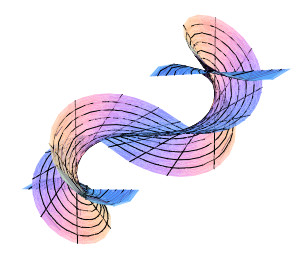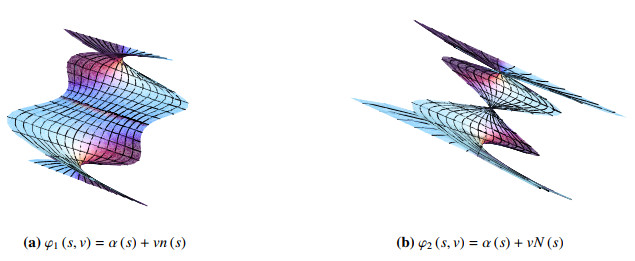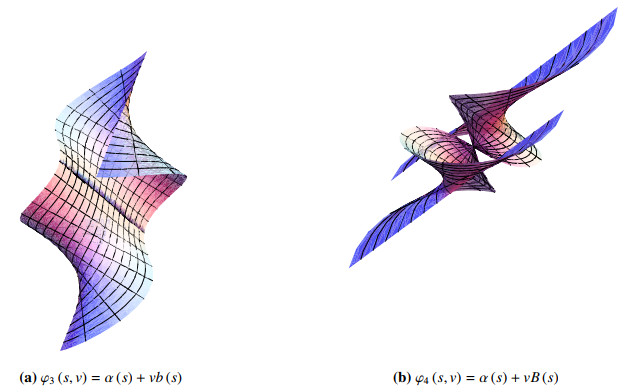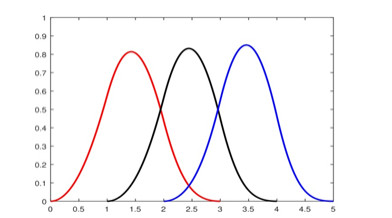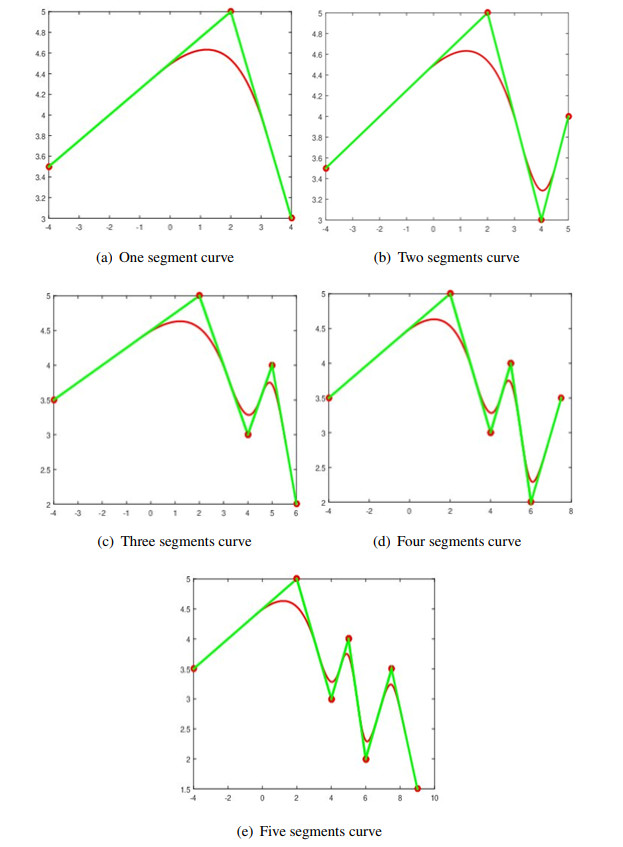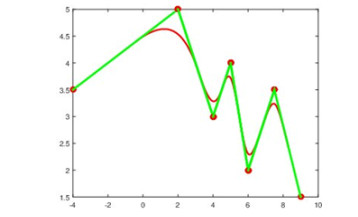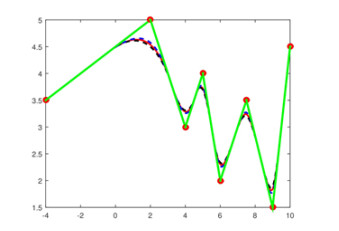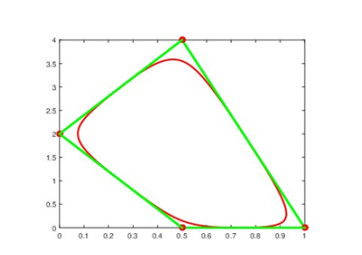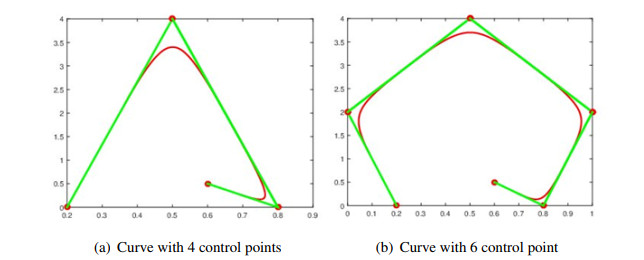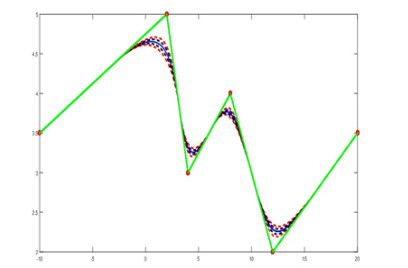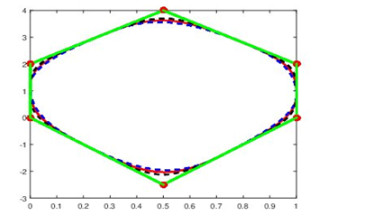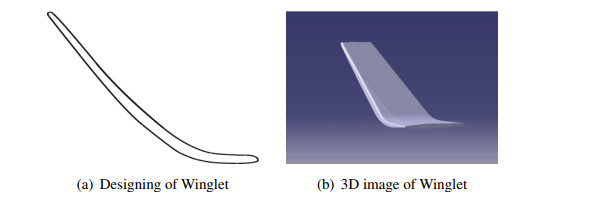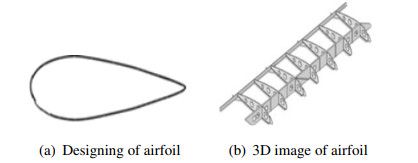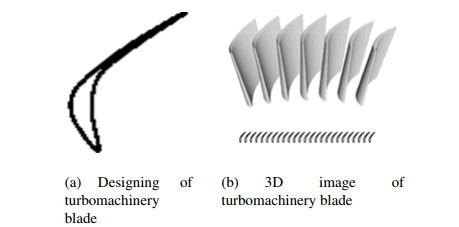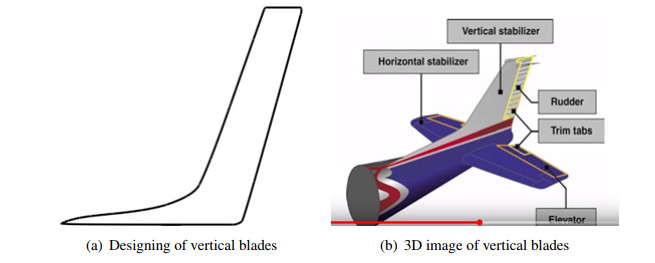1.
Introduction
The surface theory is an indispensable research topic for scientists in the fields of differential geometry, physics, engineering, and designation. One type of well-known surfaces is the ruled surfaces which are obtained by the continuous movement of a line along the curve [1,2]. Various approaches have been put forward on ruled surfaces considering the characterizations, geometric and algebraic properties of ruled the surfaces. Ruled surfaces have applications in a number of domains including geometric modeling [5] or computer aided geometric designing [3,4]. Further, the technical advantages of ruled surfaces in the realization of free-form architecture and complex shapes can be seen in [6]. Such as surfaces, the theory of curves is also an important research topic regarding various disciplines. A lot of investigation has been done on the motion, evolution, and integrability of curves. Moreover, the geometric characterizations for these integrable curves and the evolution of inelastic plane curves have been studied widely [7,8,9,10,11]. Hasimoto [12] handled the motion of the vortex filament equation has been studied by and the time evolution of the curves has been obtained. It also has been proved that the vortex filament equation (smoke ring) is equal to the nonlinear Schrödinger equation. The motion of the curves is a predecessor part of soliton theory. The geometric applications of Bäcklund and Darboux transformations between curves have been discussed in soliton theory [12,13,14]. Many researchers have examined the surfaces obtained from these curves. For instance, the evolution of translation surfaces has been studied by [15]. Additionally, by considering the inextensible flows of curves, the developable surfaces and tangent developable surfaces have been considered in [16,17,18,19] and the evolution of special ruled surfaces according to the Serret-Frenet frame has been clarified in [20]. On the other hand, the Serret-Frenet frames are inadequate for studying analytic space curves of which curvatures have discrete zero points since the principal normal and binormal vectors may be discontinuous at zero points of the curvature. For the solution of this problem, Sasai [21] has introduced an orthogonal frame and obtained a formula, which corresponds to the Frenet-Serret equation. Recently, in Minkowski 3-space, the modified orthogonal frame with non-zero curvature and torsion of a space curve has been described by Bukcu and Karacan [22]. Then, using this the modified orthogonal frame, spherical curves, Mannheim curves and some special curves have been reconsidered [23,24,25]. In the light of recent events given above, the aim of this study is to study the evolution of analytic space curve according to the modified orthogonal frame and the geometric properties of special ruled surfaces generated by the motion of these curves.
2.
Preliminaries
In Euclidean 3-space, Euclidean inner product is given by <,>=dx21+dx22+dx23 where x=(x1,x2,x3)∈E3. The norm of a vector x∈E3 is ‖x‖=√|<x,x>|. For any α curve, if ‖α′(s)‖=1, then α curve is unit speed curve in Euclidean space. The most well-known and used Frenet frame on a curve plays an important role in differential geometry. Let α be a space curve with respect to the arc-length s in Euclidean 3-space E3. t, n and b are tangent, principal normal and binormal unit vectors at each point α(s) of a curve α, respectively. Then there exists an orthogonal frame {t,n,b} which satisfies the Frenet-Serret equation
where κ is the curvature, τ is the torsion.
The fundamental theorem of regular curves states that if κ>0 and τ are differentiable functions then there exists a unit speed curve whose curvature and torsion are κ and τ, respectively [1]. However, the principal normal and binormal vectors are discontinuous at zero points of the curvature in general and the curvature is not always differentiable even if the curve is analytic. In that case, the formulation of the Frenet frame of a space curve generally established causes ambiguity for an analytical space curve at a point where the curvature vanishes, see Example 2.1.
This problem was considered by Hord [26] and Sasai [21,27] for analytic space curves of which the curvatures have discrete zero points. With a simple but convenient approach, an orthogonal frame was introduced by Sasai [21]. Although this modified orthogonal frame seems like a Frenet frame with scaled normal and binormal vectors, it allows to use a new formula corresponding to the Frenet-Serret equation for the aforementioned case and is also useful for investigating analytic curves with singularities.
Let α be an analytic curve of which curvature has discrete zero points in Euclidean 3-space. Under the assumption κ(s) of α is not identically zero, the elements of modified orthogonal frame are given by
where s is the arc-length parameter and T∧N is the vector product of T and N.
The relations between the Frenet frame {t,n,b} and modified orthogonal frame {T,N,B} at non-zero points of κ are
In the course of time, this orthogonal frame is called the modified orthogonal frame [22]. The modified orthogonal frame {T,N,B} satisfies
such that ⟨,⟩ is the Euclidean inner product. From these equations, the differentiation formula for the modified orthogonal frame {T,N,B} is given by
where κs denotes the differentiation with respect to s and τ=det(α′,α″,α‴)κ2 is the torsion of α. Here, the essential quantities κ2 and τ are analytic in [21,22].
Example 2.1. Let us consider a curve given by the parametric equation
which is a helical curve over clothoid (Cornu spiral or Euler spiral) [2] and has various applications in real life such as the highway, railway route design or roller coasters, etc. Here the components s∫0cos(πt22)dt and s∫0sin(πt22)dt are called Fresnel integrals. The elements of the Frenet trihedron of the curve α are obtained as
and the curvature is κ(s)=π|s|√2. Besides the curvature is not differentiable, the principal normal and binormal vectors are discontinuous at s=0 since n+≠n− and b+≠b− for n+=lims→0+limn(s), n−=lims→0−limn(s) and b+=lims→0+b(s), b−=lims→0−limb(s).
Whenever the curvature is considered as a signed quantity κ(s)=∓πs√2, the curve forms a symmetrical double spiral, see Figure 1.
To prevent the occurrence of two reverse oriented principal normal vectors and binormal vectors, it is useful to refer to the modified orthogonal frame with unique elements
under the assumption that the curvature κ(s) of α is not zero. Here the essential quantities are obtained as κ2=π2s22 and τ(s)=πs√2.
3.
Evolution of space curve with modified orthogonal frame
A curve α in Euclidean 3-space is a vector-valued function α(s,t)∈E3 where s is the arc-length parameter and t is the time parameter, then the equation of the vortex filament (smoke ring equation) is given by
where the subscripts indicate the partial differential. Let α be an analytic curve with curvature having discrete zero points. To at non-zero points of the curve, the time evolution of the modified orthogonal frame {T,N,B} can be written in matrix form as follows:
where α, β and γ are smooth functions. By considering the curvature κ of the curve α is not identically zero and using the equations Tst=Tts,Nst=Nts,Bst=Bts, we obtain
We suppose that the velocity according to the curve α is given by
From equation αst=αts, we find the following equations
where a, b and c are the coefficients of the tangent, normal and binormal vectors of the velocity, respectively. Substituting the Eq. (3.5) into the second Equation of (3.3), we get
For a solution of smoke ring equation, the velocity vector is given by
Thus, from the Eqs. (3.4) and (3.7), we get
Substituting the Eq. (3.8) into the Eqs. (3.5) and (3.6), we get
Thus, according to the modified orthogonal frame, the Eq. (3.9) represents the time evolution of the curve and the motion of the curve
4.
Properties of evolution of special ruled surfaces with modified orthogonal frame
In this section, we study the tangent, normal and binormal ruled surfaces using the modified orthogonal frame along an analytic space curve. The parametric equation of the ruled surface is given by
where α(s) is called the base curve and l(s) is the director curve. If the curves α(s) and l(s) move with time t, then the equation of the ruled surface is as follows
4.1. Tangent ruled surface
The ruled surface generated by the motion of the tangent vector T of a curve α is called the tangent ruled surface and the equation of this surface is represented by
Example 4.1. Let us consider the helical curve over clothoid given in Example 2.1. Then the parametric equation of tangent ruled surface is
see Figure 2.
The partial differentiations of the equations of the tangent ruled surface are
By using the Eq. (4.3), we get the unit normal field of this surface as
The first fundamental form of the tangent ruled surface in Euclidean space is given by
where the coefficients of the first fundamental form are
From Eq. (4.3), the second derivatives are found and given as
The second fundamental form of the normal surface is given by
where the coefficients of the second fundamental form are
Corollary 4.1. The Gaussian and mean the curvatures of the tangent ruled surface X=X(s,v,t) are
respectively.
Proof. From the Eqs. (4.5) and (4.7), we easily obtain the Gaussian curvature and the mean curvature, respectively, as follows
From the Eqs. (4.8) and (4.9) the followings are obvious.
Corollary 4.2.
ⅰ. The tangent ruled surface is developable.
ⅱ. The tangent ruled surface is minimal surface if τ=0.
4.2. Normal ruled surface
The ruled surface generated by the motion of the normal vector N of the curve α is called the normal ruled surface and the equation of this surface is
Example 4.2. If we take the curve given in Example 2.1, then the parametric equations of normal ruled surfaces generated by normal vectors of Frenet frame and modified orthogonal frame are
and
respectively. The first normal ruled surface is generated by the normal vector of Frenet frame and it is discontinuous at s=0 and the second one is generated by the normal vector of the modified orthogonal frame, see Figure 3.
The derivatives of the normal ruled surface with respect to s and v are
respectively. Using Eq. (4.11), we get the unit normal field of this surface is found as
The first fundamental form of the normal ruled surface in Euclidean space is given by
where the coefficients of the first fundamental form are
From Eq. (4.11), the second derivative is found as
The second fundamental form of the normal surface is given by
where the coefficients of the second fundamental form are
Corollary 4.3. The Gaussian and mean the curvatures of a normal ruled surface X=X(s,v,t) are
respectively.
Proof. From the Eqs. (4.13) and (4.15), we easily obtain the Gaussian curvature and the mean curvature respectively as follows
From the Eqs. (4.16) and (4.17), the following result is obvious.
Corollary 4.4. The normal ruled surface is developable iff τ=0 and minimal iff vτκs+(1−vκ2)κτs=0.
4.3. Binormal ruled surface
The ruled surface generated by the motion of the binormal vector B of the curve α is called the binormal ruled surface and the equation of this surface is
Example 4.3. The parametric equations of binormal ruled surfaces generated by binormal vectors of Frenet frame and modified orthogonal frame the curve given in Example 2.1 are
and
respectively. The first surface (generated by binormal vector of Frenet frame) is discontinuous at s=0 and the second one is generated by binormal vector of modified orthogonal frame, see Figure 4.
The tangent vectors for the binormal ruled surface are
where the subscripts s and v represent partial derivatives of the binormal ruled surface. Using Eq. (4.19), we get the unit normal field of this surface is found as
The first fundamental form of the normal ruled surface in Euclidean space is given by
where the coefficients of the first fundamental form are
From the Eq. (4.19), the second derivative is found and given as
The second fundamental form of the normal surface is given by
where the coefficients of the second fundamental form are
Corollary 4.5. For the binormal ruled surface X=X(s,v,t) the Gaussian and mean the curvatures are
respectively.
Proof. From the Eqs. (4.21) and (4.23), we easily obtain the Gaussian curvature and the mean curvature respectively as follows
Corollary 4.6. From the Eqs. (4.16) and (4.17), the normal ruled surface is developable iff τ=0 and minimal iff vτs−(vτ)2−1=0.
Conflict of interest
The authors declare no conflict of interest.
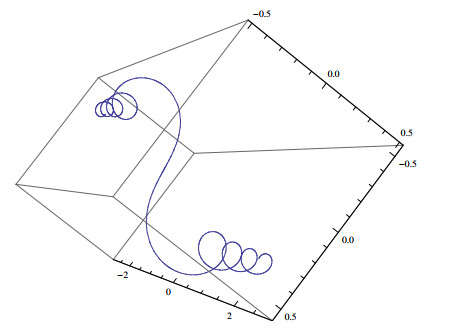









 DownLoad:
DownLoad:
